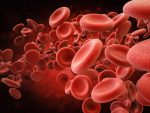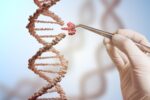Researcher Awarded for Work That Could ‘Revolutionize’ SCD Therapy

A renowned stem cell biologist has been honored with the 2022 Canada Gairdner International Award for his work that set the grounds for a new approach to treating sickle cell disease (SCD) and beta-thalassemia.
Stuart H. Orkin, MD, is the David G. Nathan Distinguished Professor of Pediatrics at Dana-Farber/Boston Children’s Cancer and Blood Disorders Center and Harvard Medical School, and an investigator at Howard Hughes Medical Institute.
“His discoveries have paved the way for clinical approaches that will revolutionize the treatment of hemoglobin disorders — SCD and beta-thalassemia — that affect more than five million people worldwide,” according to a press release.
During his four-decade career, Orkin delved into how blood cells form and how blood diseases begin and progress.
His most recent work led to the discovery of the molecular mechanism responsible for a switch in the production of hemoglobin from its fetal (HbF) to its adult (HbA) form. Hemoglobin is the protein found inside red blood cells that is responsible for carrying oxygen around the body. This switch in the production of different versions of the protein occurs during normal human development.
Orkin’s team found that a certain protein helps coordinate the switch from HbF to HbA. This protein, called BCL11A, works by shutting off the production of HbF in adults.
The researchers also found that switching the production of HbF back on could lessen the severity of SCD and beta-thalassemia, two inherited blood diseases that occur when the body makes either a faulty version of hemoglobin or does not make enough of it.
As a potential therapeutic approach, they thought that tuning down the amount of BCL11A would increase the production of HbF, which would make up for the mutant or deficient HbA in these diseases. A first set of experiments in engineered mice provided proof-of-principle that tuning down the amount of BCL11A indeed prevented red blood cell damage.
Then, Orkin’s team found a specific point in BCL11A, the gene providing instructions for making the protein of the same name, that was key for it to work. To remove that specific point, they used CRISPR in blood stem cells.
CRISPR is a gene-editing tool that allows scientists to make changes to a cell’s DNA sequence with relative ease. It involves the use of an RNA molecule that guides an enzyme — a type of protein — to a specific point in the DNA sequence. The enzyme cuts open the DNA at that specific point and removes some of its building blocks.
When that specific region in BCL11A was removed, the production of HbF increased. This work laid the groundwork for a clinical trial in patients with SCD that resulted in freedom from sickle crises and anemia.
The award, with a value of CA$100,000 (about $80,000), is one of seven Gairdner Awards currently given annually. It recognizes biomedical scientists who have led to advances in the understanding of human biology and disease.








